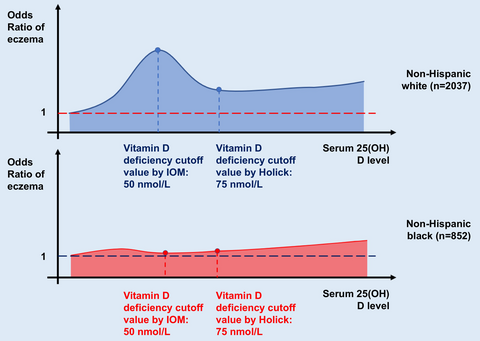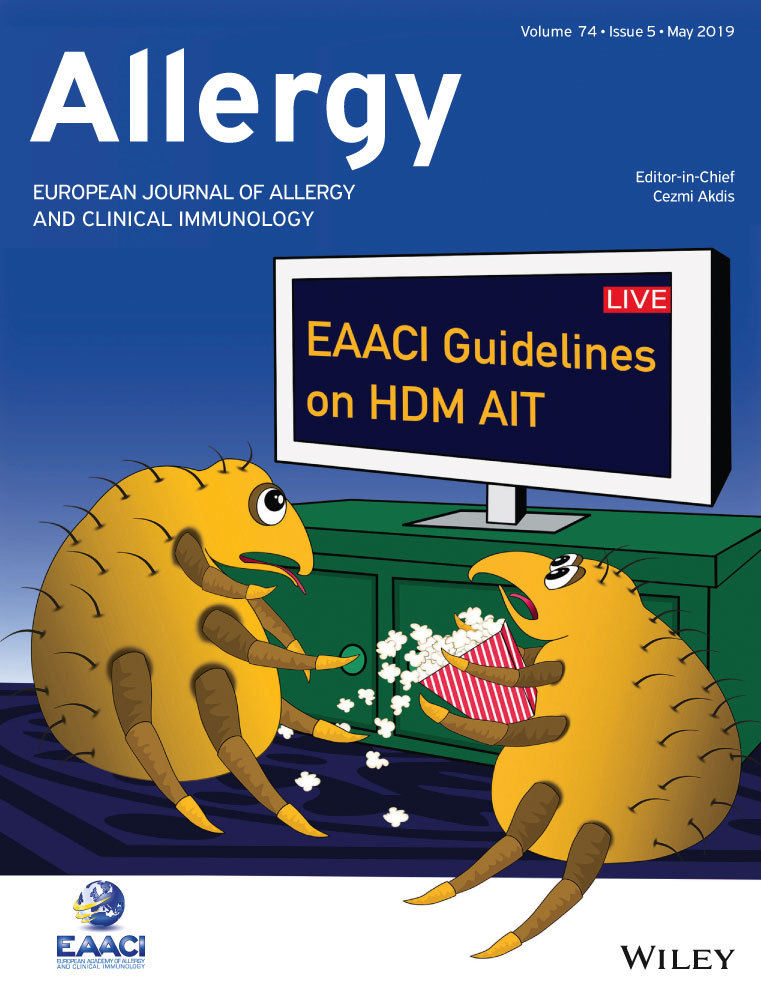Inverted U-shaped relationship between vitamin D and ever-reported eczema in US adults
Abstract
Background
Eczema is a skin condition which affects up to 10% to 20% of people worldwide. Previous literature finds that low vitamin D levels may be a risk factor for eczema, but the association is not clear.
Methods
We used the cross-sectional data from U.S. National Health and Nutrition Examination Survey 2005-2006. Adults were defined as 20 years and older. The association between eczema and serum 25-hydroxyvitamin D [25(OH)D] was estimated using multivariate logistic regression models adjusted for patient demographics, lifestyle variables, stress, and medical comorbidities. Restricted cubic spline analyses were performed to explore nonlinear relationship. We also stratified by race.
Results
A total of 3921 adults were included in the analysis. The prevalence of ever-report of eczema was 7.94% in US adults. Reports of eczema were higher in people with higher socioeconomic status, depressive symptoms, previous history of asthma and hay fever, female, sampled in summer, and nonHispanic white. The logistic regression found higher odds ratio of eczema in vitamin D deficiency group (<50 nmol/L) compared to sufficiency group (>75 nmol/L) (OR = 1.81, 95% CI: 1.09-3.01, P = 0.02). The spline analysis found an inverted U-shaped relationship between eczema and serum 25(OH)D level. Eczema risk reached the highest at around 45 nmol/L, with decreasing risk in both directions away from this value. This relationship was absent in nonHispanic black population.
Conclusion
Vitamin D is associated with reports of eczema in nonHispanic white population, but not in the nonHispanic black population in the United States.
Graphical Abstract
We found an inverted U-shaped relationship between ever-report of eczema and serum 25(OH)D level among US adults. There is a racial difference, as this relationship was observed among nonHispanic white population, but not nonHispanic black population. We see more reduction in risk of eczema beyond 75 nmol/L of vitamin D sufficiency level.
CONFLICT OF INTEREST
Tarannum Jaleel: Lilly Pharmaceuticals (Clinical Investigator); Canfield Scientific (Clinical Investigator). Dr. Amanda MacLeod receives payments from Silab for consulting Services not pertinent to this work.





